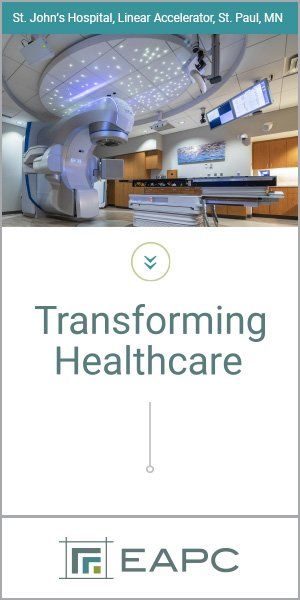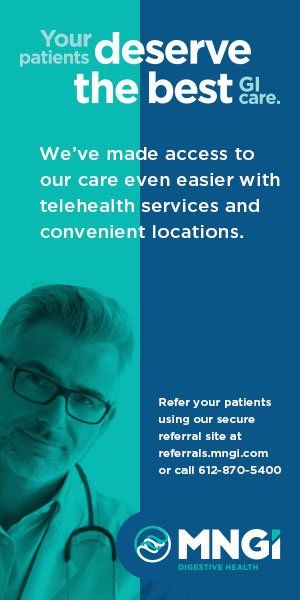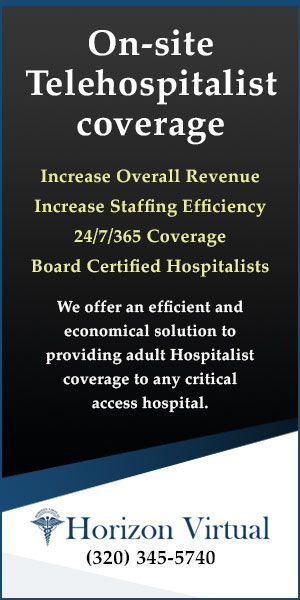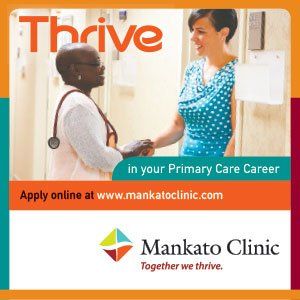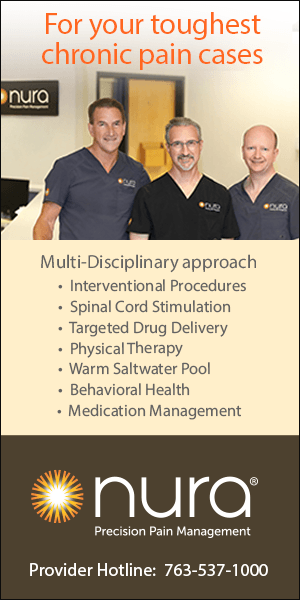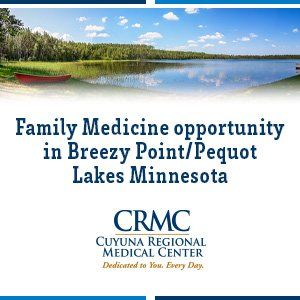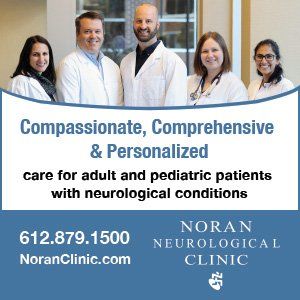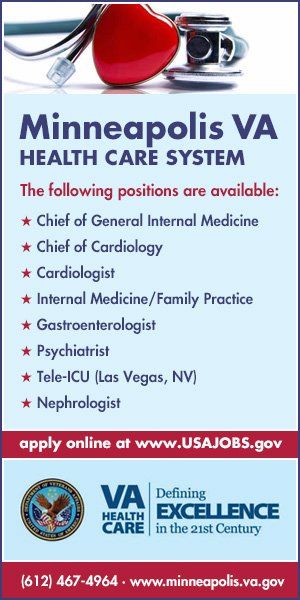ince its founding, MN Community Measurement (MNCM) has played a pivotal role in Minnesota’s health care landscape. Over the last 20 years, following a mission to empower health care decision makers with meaningful data to drive improvement, MNCM evolved from a small collaborative initiative into a statewide leader in health care measurement and reporting.
Cover one
Broadening the Lens
Improving health data measurement
By Liz Cinqueonce, MBA, and Kate Hust, MD, MPH
The following timeline summarizes significant milestones that have brought us to where we are today as we introduce a new approach to advance our mission and impact in the community.
Early Years (2001–2005) MNCM began in the early 2000s with medical directors from Minnesota health plans recognizing the potential of collective performance reporting. The Community Measurement Project launched in 2002, and the first public Health Care Quality Report was released in 2004. MNCM became an independent 501(c)(3) organization in 2005.
National Recognition and State Partnerships (2006–2010) MNCM gained national recognition for its innovative work in quality measurement, particularly patient-reported outcome measures. It created direct data submission to collect clinical data from medical groups and launched MNHealthScores.org. MNCM partnered with the Minnesota Department of Health to support the Statewide Quality Reporting and Measurement System (SQRMS).
Expansion and Innovation (2011-2015) MNCM’s measures were adopted in key federal programs, and it published the first statewide report on health care disparities by insurance type in collaboration with the Minnesota Department of Human Services, and the first statewide public report on total cost of care (TCOC).
Modernization (2016–2019) MNCM modernized its data systems to reduce reporting burden and increase data timeliness. It launched innovative projects to improve data sharing for value-based care, leading to the creation of PIPE, a platform for secure data submission, validation and calculation of clinical quality measures. PIPE streamlines the collection of standardized, patient-level data from electronic health records, enabling more timely and accurate performance measurement. These years also saw the founding of the Common Health Information Reporting Partnership (CHIRP).
Recent Years (2020–present) MNCM focused on putting its new infrastructure into operation; expanding analytic capabilities; and fostering research partnerships. Through CHIRP, MNCM offers facilitated data-sharing services to increase efficiency and maximize the impact of quality improvement and population health initiatives.
Meaningful progress in health outcomes requires a collective effort that extends far beyond traditional health care boundaries.
Funding for MNCM’s work has evolved over the years. What began as a collaboration among health plans gradually grew with support from national grants, state contracts, supporting memberships and fee-for-service agreements with other community partners and organizations. This diversified funding model has supported our core work in measurement and reporting and our ability to innovate and adapt.
MNCM’s journey hasn’t been without challenges. Aligning the diverse needs of medical groups, health plans, government agencies, employers and the public has required sustained commitment and adaptability. But through dedication to our mission, strong partnerships, and a willingness to listen and evolve, MNCM continues to serve as an essential resource for those working to improve health and health care outcomes in Minnesota.
Reimagining the Future
As MNCM builds on more than two decades of experience and looks to the future, we stand at a pivotal inflection point: redefining the very nature of how data can be used to improve health and health care. The organization’s early work focused heavily on evaluating and publicly reporting practice performance on quality, cost and equity metrics – an approach that served as a catalyst for greater transparency, accountability and, in some cases, competition-driven improvement.
In an evolving health landscape, we have come to embrace a broader, more inclusive vision: one that recognizes that meaningful progress in health outcomes requires a collective effort that extends far beyond traditional health care boundaries. In this new model, measuring data is not just about evaluating performance – it is about illuminating opportunities, fostering shared accountability and empowering every health and health care decision maker to take action within their sphere of influence.
This evolution has been guided by an inclusive and intentional strategic planning process for 2025-2030. MNCM opened its table wider than ever before, engaging health care providers, health plans, state government agencies, local public health departments, researchers, academics, community-based organizations and consumers to better understand current needs and aspirations. Through listening sessions, surveys and facilitated discussions, a resounding theme emerged: although public reporting has brought transparency, it hasn’t always translated into the desired improvements in outcomes. The strategy of driving improvement primarily through transparency on practice performance, though well-intentioned, has limitations. Many health care community members voiced a shared sense that the problems we face today require more than performance rankings; they require collaboration, data-sharing and a unified commitment to health as a shared goal.
This feedback sparked a bold reimagining of MNCM’s role in the Minnesota health care ecosystem. Going forward, MNCM is focusing on:
- Measuring what matters to communities – expanding beyond traditional clinical metrics to include social drivers of health, access and equity-focused outcomes.
- Creating shared tools and insights – that bring together data across sectors to help communities see where they stand and discuss where to go next.
- Fostering collaboration and innovation – by serving as a convener, connector and catalyst for multi-sector efforts aimed at improving health and health outcomes.
- Centering equity – ensuring that work is informed by and is responsive to the needs of populations and communities most affected by disparities.
- Supporting action at all levels – by helping decision makers, from clinic leaders to public health officials to community advocates, identify opportunities to act and improve outcomes.
MNCM’s new approach is grounded in the belief that no single actor can solve complex health and health care challenges alone. Instead, by aligning around shared goals, leveraging trusted data and building partnerships across sectors, we can make real progress together.
From Data to Action
MNCM’s transformation is already visible in the work it produces and the tools it provides to support a more connected, informed and community-driven approach to improving health outcomes. Examples of this evolution include a modernized process providing two key pathways for health care systems and community members to shape what MNCM measures and reports, ensuring the information shared reflects the community’s highest priorities. Every three years, each publicly reported quality measure undergoes a detailed review by the Measurement and Reporting Committee (MARC) that recommends measurement priorities, specifications, guiding principles and policies for public reporting of measurement data. MARC uses a consistent set of criteria that consider performance gaps, potential for improvement, data collection burden, inclusivity, risk adjustment, and equity, among others. Based on these reviews, measures may be continued, retired, monitored or recommended for revision.
In parallel, MNCM invites broad community input through a periodic prioritization survey to identify top focus areas. MARC uses this input, along with feasibility assessments of existing and potential measures, to make recommendations to the MNCM board on which topics and measures to advance. Together these two pathways ensure MNCM’s measurement work remains both meaningful and responsive to community needs. MNCM welcomes comments on all publicly reported measures at any time.
Data alone, even when made public, weren’t moving the needle as far or as fast as hoped.
Another example of transformation is the MNCM statewide performance hub, a dynamic platform designed to bring health care data to life. More than just a reporting tool, the performance hub offers a powerful, interactive way to explore key measures of health care quality and cost across the state. It reflects our intent to offer insight that drives shared understanding and collective improvement. It provides extensive information such as statewide rates and trends that enable users to track how Minnesota is progressing on core quality and cost measures over time for measures reported by medical groups and health plans. It also shows medical group variation by providing a de-identified view of how performance varies across provider organizations for measures reported by medical groups and heath plans.
The hub also shows statewide rates by demographics, providing much-needed visibility into how outcomes differ by race, ethnicity, language and country of origin for measures reported by medical groups. Finally, it provides statewide rates by regions, offering geographic insights based on three-digit ZIP code areas to help understand local variation and target interventions where they’re needed most for measures reported by medical groups.
This February, MNCM released its most recent flagship publication, Health Care in Minnesota: Summary Report on Quality, Disparities, and Cost (for care delivered in 2023). The new report goes beyond highlighting trends in key measures to deliver new insights from community members that can help interpret the findings and surface ideas for how the information can be used to drive meaningful change. Also important, the report includes a dedicated section outlining Pathways to Action for various types of partners: health care providers, health plans, public health, community-based organizations, employers, policymakers and researchers. Each pathway is a starting point for partners to consider what role they can play and how the data can support their unique contributions to improving health and health care.
Additional Iniatiatives
As part of MNCM’s initiatives to pair data with community action, in 2025 MNCM is releasing infographics throughout the year that correspond with health awareness months. These infographics provide easily digestible analyses of the findings within the data to enhance understanding of health outcomes across the state. Additionally, a featured blog post will be published as a companion to the infographics, providing context to the data, highlighting relevant resources and boosting awareness of the work being done by health care and community organizations across the state. Recent releases in the Empowered by Data series include: Boosting Colorectal Cancer Screening and Raising Awareness on Racial Health Disparities in Minnesota. We invite all practices to share information on activities underway that we can share with the community.
Aligned with our goal of fostering collaboration and innovation, MNCM offers a pathway for small and medium-sized practices, which often lack internal analytics capacity, to participate in the Minnesota Electronic Health Record Consortium (MN-EHRC) using data already submitted for quality measurement. This enables them to contribute to projects such as the Health Trends Across Communities (HTAC) Dashboards, ensuring their representation in statewide data. The HTAC project uses EHR summary data on chronic, behavioral and mental health conditions to track prevalence trends, stratify data by patient characteristics and provide insights at state, county, zip code and census tract levels. These dashboards complement public health data sources and support needs assessments, health improvement planning, policy development, local interventions and grant applications.
These featured examples represent a major step forward in advancing our goal of equipping the broader community in addition to traditional health care system partners with meaningful data to inform action. Whereas clinic and group-level data continue to be essential for practices seeking to set internal priorities and benchmark performance, the public-facing data tools and reports now place far greater emphasis on understanding statewide patterns and disparities, identifying areas of greatest need and supporting data-informed strategies at all levels. A new community engagement and events committee will inform MNCM’s ongoing efforts to connect and foster collaboration between the health care system and the broader community to accelerate improvements in health and outcomes of care.
Redefining Impact
For nearly two decades, MNCM’s core work focused on evaluating health care practice performance on measures of quality, cost and equity, publishing detailed reports with the goal of spurring improvement through transparency. While this approach elevated Minnesota to national prominence as a leader in health care measurement, it also became clear over time that data alone, even when made public, weren’t moving the needle as far or as fast as hoped.
Our new strategy embraces a more expansive vision where data are not simply used to compare performance but to understand how the entire community is doing in achieving optimal health. This approach invites everyone, from physicians and care teams to health plans, public health, employers, community organizations and patients themselves, to use measurement as a foundation for collaborative action.
For physicians, this new model offers several avenues for engagement and impact, including contributing expertise by participating in MNCM advisory groups, committees and community events and helping ensure that the insights being developed are grounded in real-world clinical experience. Using the performance hub and MNCM reports physicians are able to identify patterns in their practice’s data to benchmark progress and to understand how patient populations are faring across key measures.
Advocating for team-based use of data ensures that performance measurement is used as a springboard for team-based learning and shared accountability and is used as a catalyst for engaging local community partners on shared initiatives. Collaborating across sectors to address disparities revealed by the data allows for working in partnership with public health, local leaders and community-based organizations to close gaps in care.
As MNCM begins this new chapter, the vital role of physicians remains unchanged. From the start, physician leadership and insight have been central to advancing meaningful measurement and improvement. Today, physicians continue to shape this work bringing clinical expertise, informing measure selection, and driving improvements in care. We are deeply grateful for your ongoing engagement, which ensures our efforts remain grounded in real-world practice and focused on improving health for all Minnesotans. More information can be found on MNCM’s website: https://mncm.org
Liz Cinqueonce, MBA, is the president and CEO of MNCM.
Kate Hust, MD, MPH, is the senior medical director of population health, ambulatory quality, Hennepin Healthcare. She is also vice chair of the MNCM board of directors
MORE STORIES IN THIS ISSUE
cover story one
Broadening the Lens: Improving health data measurement
By Liz Cinqueonce, MBA, and Kate Hust, MD, MPH
cover story two
Safeguarding Surgery Standards: The legislative role in scope of practice issues























